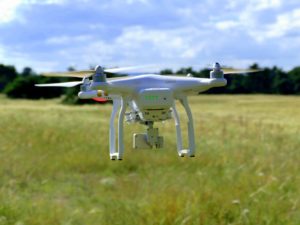 The growing popularity of drones in the U.S. and around the world has regulators, businesses and every day enthusiasts all scrambling to understand what these unmanned vehicles are capable of and the roles they may play in our daily lives. With corporations openly stating their intent to use drones for everything from delivering packages to supplying internet connectivity, and private citizens buying them for recreational use, the law is having a difficult time trying to keep up with these fast-moving devices.
The growing popularity of drones in the U.S. and around the world has regulators, businesses and every day enthusiasts all scrambling to understand what these unmanned vehicles are capable of and the roles they may play in our daily lives. With corporations openly stating their intent to use drones for everything from delivering packages to supplying internet connectivity, and private citizens buying them for recreational use, the law is having a difficult time trying to keep up with these fast-moving devices.
Near-Misses on the Rise
As drone usage has surged over the last half decade, so has the frequency of dangerous incidents in which they have been involved. On November 14, in the skies above Toronto, a Canadian airliner with 54 people aboard had to use evasive maneuvers to avoid a drone, injuring two crew members in the process. In April, a British Airways aircraft collided with a drone as it prepared to land at London’s Heathrow Airport; fortunately no one was hurt. The FAA indicates there are 3.5 near-misses between drones and aircraft every day in U.S. airspace alone.
The Tension Between Safety and Economic Benefit
The federal government has been slow to respond to the explosion in drone usage. In fact, it was only in August of this year that the FAA’s final rules went in to effect. Drone makers and tech companies had lobbied for the rules for five years. But federal regulators, while trying to accommodate the potential economic benefits of the technology, have struggled to safely integrate the popular, remote-controlled flying vehicles into airspace.
While the new commercial drone rules allow a broad range of businesses to use drones under 55 pounds, there are several restrictions, including the following:
- Drones must be operated by a pilot who has passed a written test (this relaxes a previous rule, which stated that the operator needed to have a commercial pilot’s license).
- The pilot must be at least 16 years old.
- Drones can be flown only below 400 feet, during the day, and at least five miles away from airports.
- Drones cannot be flown faster than 100 miles per hour.
- The drone must always be in the operator’s line of sight.
Deliveries Not Yet Allowed
That final bullet point, about the drone always remaining in the operator’s line of sight, means that companies like Amazon and Google, who have pushed hard for drone package delivery, will have to wait a little longer to take to the skies. Even so, many industry watchers predict that regulators will eventually get comfortable with the idea of drone deliveries if drones prove reliable and safe. So, with time and continued lobbying by influential companies, it seems likely that packages will eventually be dropped off at our doors by unmanned vehicles.
Privacy and Trespassing
Various states, including Wisconsin, have in recent years passed legislation to address the regulation of drone usage. FAA rules do not prevent states and cities from continuing down this path. In fact, the FAA has released its own written examples of the types of laws for which a consultation with the FAA is recommended, and the areas of the law that are not subject to federal regulation. The FAA has acknowledged that issues of privacy and trespass fall within the scope of state and local regulation. Since matters of privacy and trespass are very old legal concepts, it will be of great interest to see how courts apply them to drone usage.
For example, what happens if Person A flies a drone over Person B’s property, records footage of the property, and then posts the footage on the Internet? Has Person B’s privacy been invaded? A situation with roughly those facts arose last year in Richfield, Wisconsin. Law enforcement in the area said no laws were broken because a person was not present.
Traditional trespass laws require the physical presence of one person on another person’s property. An unmanned drone has no person on board, so how does the law of trespass apply? One potential argument is that the drone is merely an extension of the operator. The courts have yet to hear and decide on this question, so things remain unclear.
In Conclusion
There is still a great deal of uncertainty in the law with regard to drone operation. As a result, litigation is likely going to occur across the country when dealing with legal concepts such as privacy and trespass.
Along the way, courts will need to decide to what extent, if at all, states can regulate their own airspace—airspace that has always been the exclusive territory of the federal government. Not until a number of cases proceed through the courts will we better understand the rights of property owners and the rights of drone operators.
If you would like to discuss evolving drone laws, an experienced Wisconsin attorney can offer assistance. At Kosa Law, we would be happy to talk to you about this issue.

